Wingspan 40 m | First flight November 23, 1959 | |
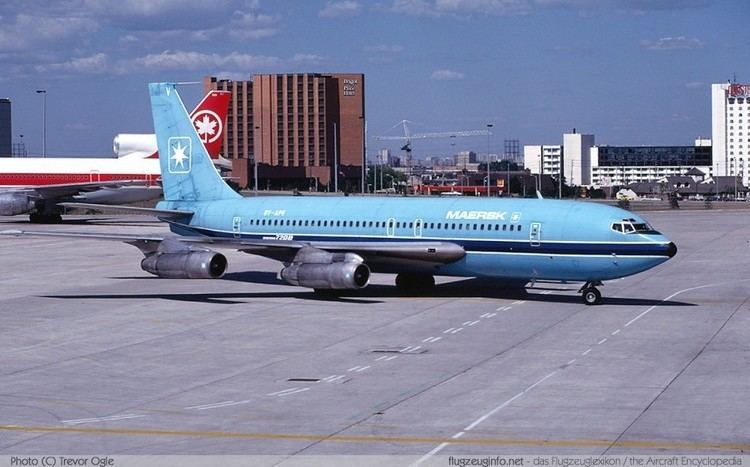 | ||
Manufacturer | ||
Boeing 720 crash test
The Boeing 720 is a four-engine narrow-body short- to medium-range passenger jet airliner. Developed by Boeing in the late 1950s from the Boeing 707, the 720 has a shorter fuselage and less range. The 720 first flew in November 1959 and the model entered service with launch customer United Airlines in July 1960.
Contents
- Boeing 720 crash test
- Rc model airliner boeing 720 707
- Shorter range 707
- Further developments
- Design
- Fuselage
- Wings
- Engines
- Other equipment
- Operational history
- Variants
- Operators
- Accidents and incidents
- Aircraft on display
- Specifications
- References
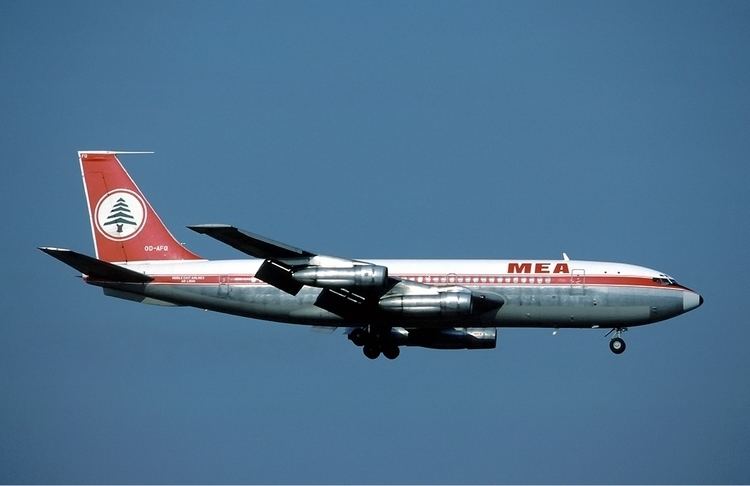
Two primary versions of the aircraft were built. The original 720 with Pratt & Whitney JT3C turbojet engines entered service in 1960, while the improved 720B with Pratt & Whitney JT3D turbofans entered service in 1961. Some 720s were later converted to 720B specification.
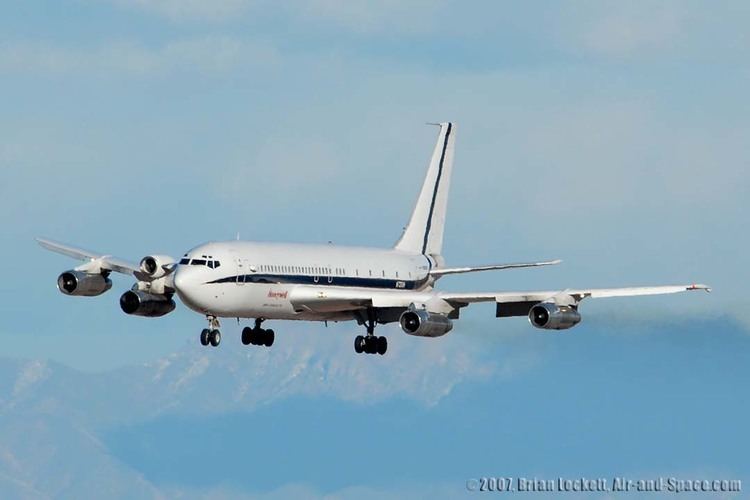
Although only 154 were built, the Boeing 720 and 720B was profitable due to the low research and development costs of it being a slightly modified version of the 707-120. It was later replaced by the Boeing 727. Some 720s are on display at the Utah Aviation Museum
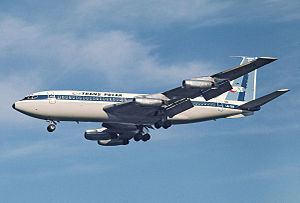
Rc model airliner boeing 720 707
Shorter range 707
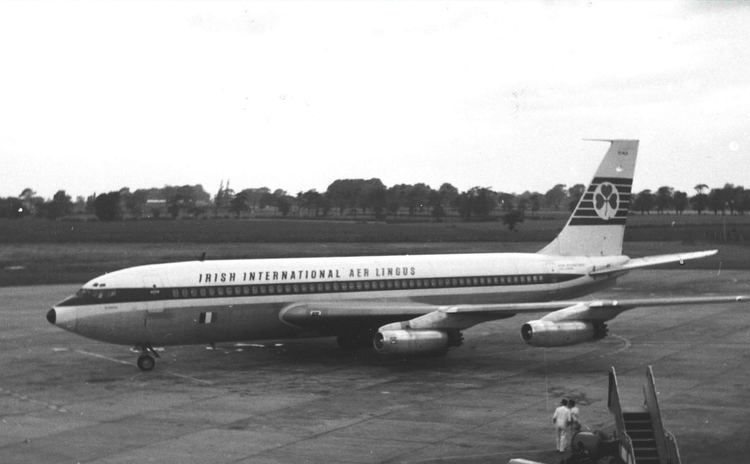
Boeing announced its plans to develop a new version of the 707 in July 1957. It was developed from the 707-120 to provide for short to medium range flights from shorter runways. The model was originally designated 707-020 before being changed to 720 at the input of United Airlines. Compared to the 707-120, it has four fewer frames in front of the wing and one fewer aft: a total length reduction of 8 feet 4 inches (2.54 m).
The new model was designed to a lower maximum takeoff weight with a modified wing and a lightened airframe. The wing modifications included Krueger flaps outboard of the outboard engines, lowering take-off and landing speeds—thus shortening runway length requirements—and a thickened inboard leading edge section, with a slightly greater sweep. This modification increased the top speed over the -120. It had four Pratt & Whitney JT3C-7 turbojet engines producing 12,500 lbf (55.6 kN) each.
At one point in the development phase, it was known as the 717-020, although this was the Boeing model designation of the KC-135 and remained unused for a commercial airliner until it was applied to the MD-95 following Boeing's merger with McDonnell Douglas in 1997.
Because the aircraft systems were similar to the Boeing 707 no prototype Boeing 720 was built; any different systems were tested on the Boeing 367-80. The first 720 took its maiden flight on November 23, 1959. The Type Certificate for the 720 was issued on June 30, 1960. It was first put into service by United Airlines on July 5, 1960. 65 of the original version were built.
Further developments
The 720B version of the 720 had JT3D turbofan engines, producing 17,000 lbf (75.6 kN) each. The JT3D engines had lower fuel consumption and higher thrust. The maximum takeoff weight for the 720B was increased to 234,000 lb (106,000 kg). The 720B first took to the skies on October 6, 1960 and received certification and entered service with American Airlines in March 1961. 89 720Bs were built, in addition to conversions of American's ten existing 720s.
As a modification of an existing model the 720 had minimal research and development costs, which allowed it to be successful despite few sales. The company built 154 Boeing 720s and 720Bs from 1959 to 1967. The 720's wing modification was later added on the -120B and on -120s retrofitted to the B standard.
Design
The Boeing 720 is a four-engined low-wing cantilever monoplane. Although it was similar to the Boeing 707, compared with the 707-120 it was 9 ft (2.73 m) shorter in length, and had a lighter structure through use of lighter forged metal parts and thinner fuselage skins and structures.
Fuselage
The rearmost of the 707's over-wing emergency exits was deleted on each side which reduced passenger capacity, while two over-wing exits were an option for higher-density configurations.
Wings
The 720 uses an improved wing based on the 707 wing. The wingspan remained the same as the 707-120. For the 720, the wing was changed between the fuselage and inner engines by adding a wing root glove. This glove reduced the drag of the wing by decambering the root, which reduced the "middle effect", thereby increasing the effective local wing sweep. It is reported that the wing root glove increased the drag divergence Mach number of the wing by Mach 0.02.
Engines
Though initially fitted with turbojet engines, the dominant engine for the Boeing 720 was the Pratt & Whitney JT3D, a turbofan variant of the JT3C with lower fuel consumption and higher thrust. JT3D-engined 720s had a "B" suffix; some of American's 720Bs were conversions of JT3C-powered 720s.
Like the 707, the 720/720B used engine-driven turbocompressors to supply high-pressure air for pressurization. The engines could not supply sufficient bleed air for this purpose without a serious loss of thrust. The small air inlets and associated humps are visible just above the main engine inlets on the two inner engine pods of all 720s and 720Bs; the lack of the turbocompressor inlet on the outer starboard pod (number 4 engine) helps spotters distinguish 720/720Bs from most 707s, which had three turbocompressors.
Other equipment
The Boeing 720 lacked an APU, and was reliant instead on ground power and pneumatic air to power the aircraft's systems, provide air conditioning, and start the engines while on the ground. The normal practice for Boeing 720 aircraft was to start the number 3 (inner starboard) engine first, disconnect ground power and air. After start of the first engine the use of bleed air from that engine could be used to provide necessary air pressure to start the other engines one by one. However, on ground, with ground starting crew already at hand, all four engines were usually started with ground crew help as this was more reliable and faster.
Operational history
The first aircraft was a production aircraft for United Airlines which flew on November 23, 1959. The Type Certificate for the 720 was issued on June 30, 1960. The first service of the 720 was by United Airlines on July 5, 1960 on the Los Angeles-Denver-Chicago route. American Airlines followed by putting the 720 in commercial operation on July 31 that same year. On 2 January 1962, Pakistan International Airlines′ first Boeing 720B – a Boeing 720-040B (registration AP-AMG) piloted by Captain Abdullah Baig and copilot Captain Taimur Baig – set a world record during the London-to-Karachi leg of its delivery flight to Pakistan for speed over a commercial air route, making the flight in 6 hours 43 minutes 55 seconds at an average speed of 938.78 km/h (582.98 mph).
The 720 was supplanted by the Boeing 727 in the mid-1960s in its medium-range, high-performance market. The late 1960s, 720 and 720B aircraft were used by the US military to shuttle troops to the Far-East war efforts. The interior of these planes were stripped of class partitions. Some of these flights originated at Travis AFB California and flew non-stop to Japan. At least one of the landing sites was Yokota AB, Japan before the troops traveled to their final destinations.
After disposal of 720s by the major airlines, many were acquired by second rank operators in South America and elsewhere.
In 1984, a Boeing 720 flown by remote control was intentionally crashed at Edwards AFB as a part of the FAA and NASA Controlled Impact Demonstration program. The test provided peak accelerations during a crash. The performance of fire-retardant fuel was also tested.
The first 720 (N7201U) was later renamed "The Starship" and become a private charter jet used mainly by touring rock bands. Its main user was Led Zeppelin in the 1970s. The seating capacity was reduced and a bar with a built-in electric organ were added, along with beds, a shower, a lounge area, a TV and video cassette player.
Honeywell operated the last Boeing 720 in operation in the United States, flying out of Sky Harbor airport in Phoenix. The aircraft had been modified with an extra engine nacelle mounted on the right side of the fuselage to allow testing of a turbine engine at altitude, operating on special certification allowing it to be used for experimental use. This 720B was scrapped on June 21 and 22, 2008. Honeywell replaced their aircraft with a Boeing 757.
Pratt & Whitney Canada operated the last flying 720 until 2010. Its final operational flight occurred on September 29, 2010. Pratt & Whitney Canada replaced the testbed with a Boeing 747SP. In May 2012, the former PWC 720 was flown to CFB Trenton, Ontario to be put on display at the National Air Force Museum of Canada.
Variants
Operators
♠ Original operators
The following operators flew Boeing 720/720Bs:
Accidents and incidents
The Boeing 720 has had 23 hull-loss accidents during its career; it was also involved in a number of incidents including nine hijack incidents and one aircraft destroyed by a bomb in mid-air in 1976. Only 12 of the hull-loss accidents included fatalities which totaled 175 deaths in addition to the 81 deaths on the aircraft destroyed in mid-air by a bomb.
The worst accidents were:
Aircraft on display
Specifications
Sources: Boeing
